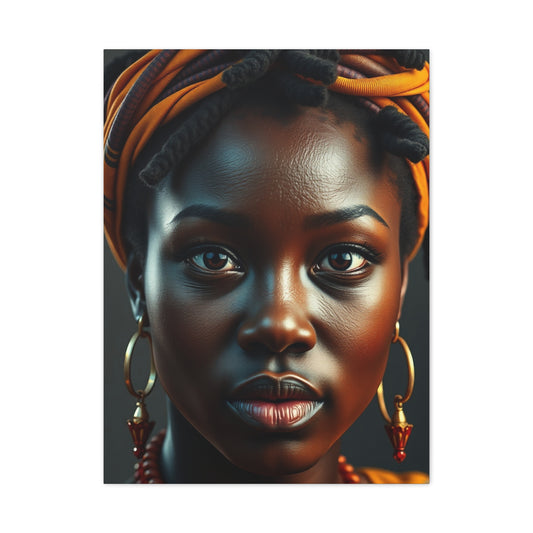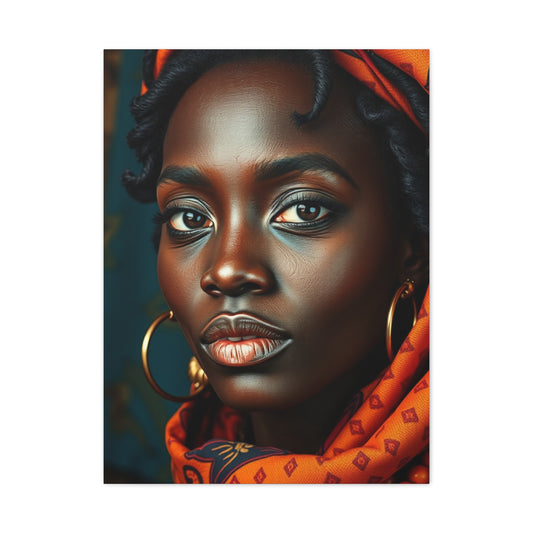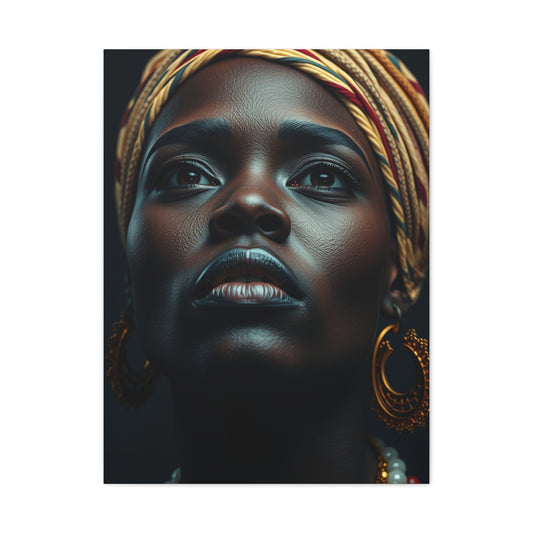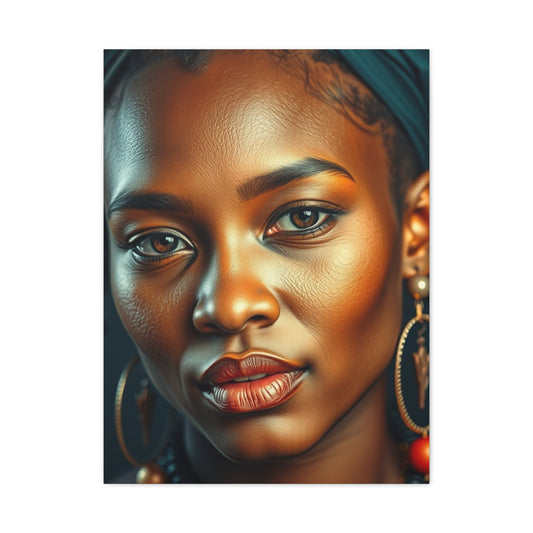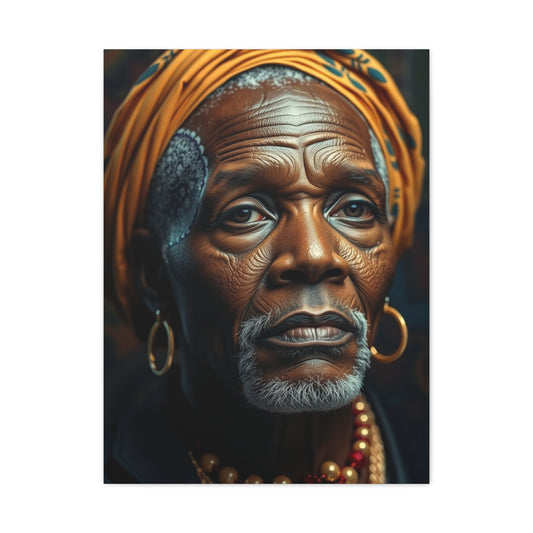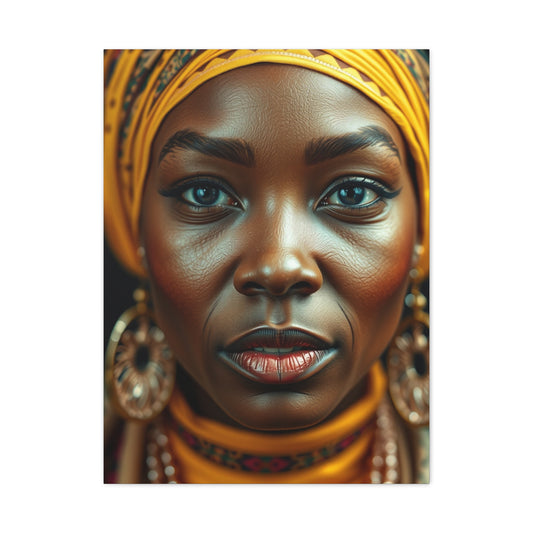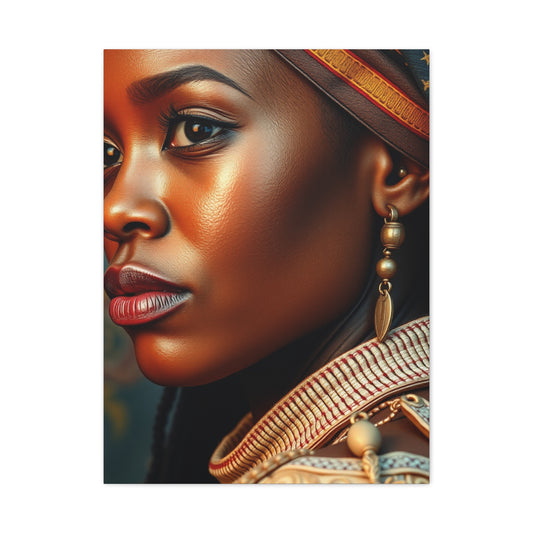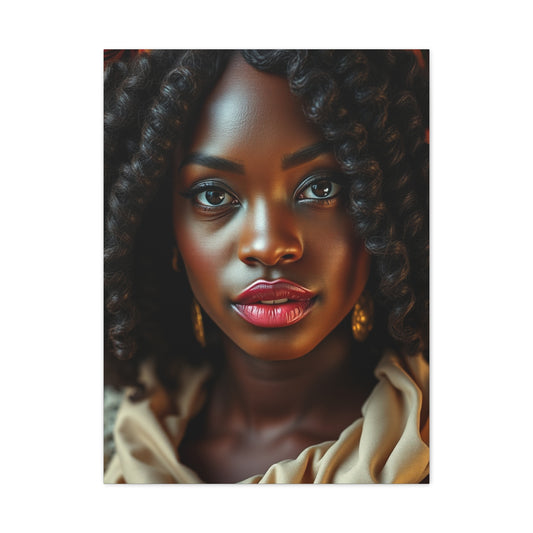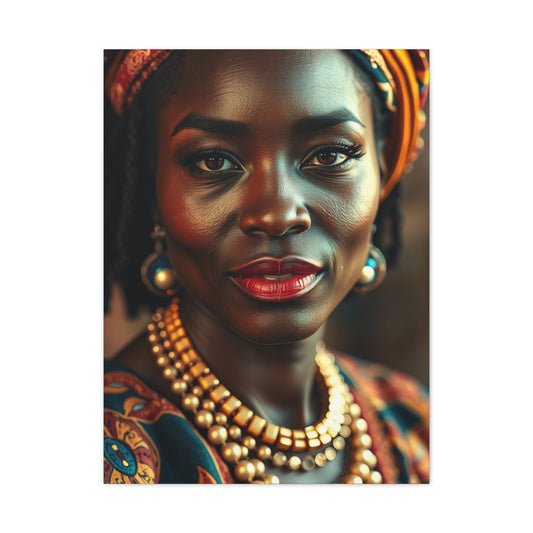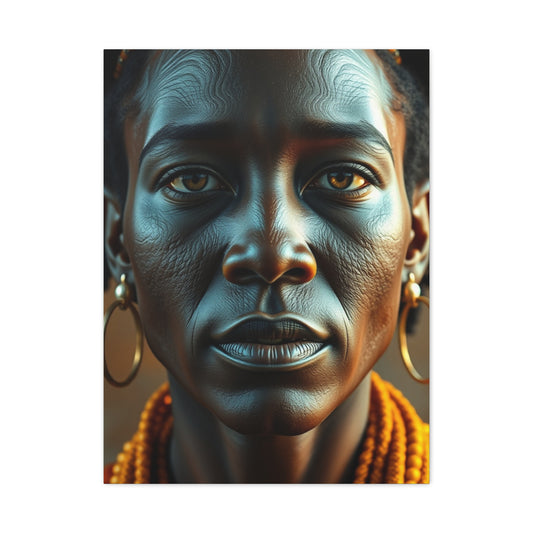Comprehensive African American Wall Art Ideas for Every Home
African American wall art serves as a powerful conduit for expressing cultural identity, celebrating heritage, and transforming living spaces into meaningful sanctuaries of artistic expression. The profound impact of thoughtfully curated artwork extends far beyond mere decoration, creating environments that resonate with history, culture, and personal significance. Contemporary homeowners increasingly recognize the transformative potential of incorporating culturally significant pieces that honor African American experiences while enhancing interior aesthetics.
The evolution of African American artistic expression encompasses centuries of creativity, resilience, and innovation. From traditional African motifs reimagined in contemporary contexts to modern interpretations of historical narratives, these artistic endeavors represent a rich tapestry of cultural storytelling. Understanding the nuances of selecting appropriate pieces requires consideration of personal preferences, spatial dynamics, and the broader narrative each artwork contributes to your living environment.
Modern interior design increasingly embraces authenticity and cultural representation, making African American wall art not merely trendy but essential for creating spaces that reflect genuine identity and values. The marketplace offers unprecedented diversity in artistic styles, mediums, and price points, ensuring accessibility for various budgets and aesthetic preferences. Whether seeking bold statement pieces or subtle cultural accents, homeowners can discover artwork that speaks to their individual journey while honoring collective heritage.
Embracing Cultural Heritage Through Artistic Expression
Cultural celebration through wall art transcends superficial decoration, establishing profound connections between past traditions and contemporary living. African American artistic heritage encompasses diverse regional influences, historical periods, and stylistic movements that continue evolving today. Understanding these foundational elements enables informed selection of pieces that authentically represent cultural values while complementing modern design sensibilities.
The significance of cultural representation in home environments cannot be overstated. Research demonstrates that surrounding ourselves with meaningful imagery positively impacts psychological wellbeing, cultural identity formation, and overall life satisfaction. African American wall art provides opportunities for daily connection with ancestral wisdom, community values, and aspirational ideals that strengthen personal and familial identity.
Traditional African artistic elements frequently appear in contemporary African American works, including geometric patterns, symbolic color usage, and spiritual iconography. These elements connect modern households with ancient traditions while maintaining relevance in current cultural contexts. Incorporating such pieces creates visual narratives that span generations, fostering appreciation for cultural continuity and artistic evolution.
The intersection of historical consciousness and contemporary creativity produces artwork that speaks simultaneously to past struggles and future possibilities. Many contemporary African American artists deliberately incorporate historical references, social commentary, and cultural symbolism that resonates with viewers on multiple levels. This multilayered approach ensures that selected pieces contribute meaningful depth to interior spaces while serving as conversation starters and educational tools.
Community-based artistic movements continue flourishing, producing unique pieces that reflect local experiences while contributing to broader cultural dialogues. Supporting emerging artists and established masters equally contributes to the vitality of African American artistic expression. Gallery partnerships, artist collectives, and cultural institutions provide valuable resources for discovering authentic pieces that align with personal aesthetics and values.
Digital platforms have revolutionized access to African American artwork, connecting collectors with artists across geographical boundaries. Online galleries, social media platforms, and digital marketplaces provide unprecedented opportunities for discovering emerging talent and acquiring unique pieces. However, navigating these platforms requires discernment to identify authentic cultural expression versus commercialized interpretations that may lack genuine connection to African American experiences.
Creating Stunning Gallery Wall Arrangements
Gallery wall composition represents an art form requiring careful consideration of visual balance, thematic coherence, and spatial relationships. Successful African American gallery walls combine diverse artistic styles, sizes, and mediums while maintaining unified aesthetic appeal. The process begins with establishing a central theme or color palette that guides selection decisions and ensures cohesive presentation.
Planning gallery wall layouts requires strategic thinking about focal points, visual flow, and room dynamics. Start by measuring wall dimensions and creating scaled templates on paper or using digital design tools. This preliminary planning prevents costly mistakes and ensures optimal positioning before making permanent installations. Consider ceiling height, furniture placement, and natural lighting when determining ideal positioning for maximum visual impact.
Mixing artwork sizes creates dynamic visual interest while preventing monotonous uniformity. Combine large statement pieces with smaller complementary works, ensuring adequate spacing between individual elements. The general rule suggests maintaining two to three inches between frames, though artistic intuition should ultimately guide spacing decisions. Experiment with arrangements on the floor before committing to wall placement.
Color coordination plays crucial roles in gallery wall success. While African American art often features rich, vibrant palettes, balancing bold elements with neutral pieces prevents overwhelming visual chaos. Consider room color schemes when selecting artwork, ensuring pieces complement rather than compete with existing decorative elements. Monochromatic schemes can be equally effective when incorporating varied textures and artistic styles.
Frame selection significantly impacts overall presentation quality. Consistent framing creates unified appearances, while varied frames add eclectic charm. Consider room style when choosing between traditional wood frames, sleek metal options, or contemporary acrylic designs. Matting choices also influence presentation, with neutral mats typically providing versatile backgrounds that enhance rather than distract from artwork.
Lighting considerations are paramount for gallery wall success. Natural lighting changes throughout the day, affecting color perception and visual impact. Supplement with adjustable track lighting or picture lights to ensure consistent illumination. Avoid placing gallery walls in areas with direct sunlight that could fade artwork over time. Strategic lighting placement creates dramatic effects while preserving artwork integrity.
Thematic coherence doesn't require identical subject matter but benefits from underlying connections between pieces. Consider organizing around historical periods, artistic movements, color palettes, or emotional themes. This approach creates narrative flow that guides viewers through the collection while maintaining individual piece integrity. Document the reasoning behind selections to help guests understand the curatorial vision.
Installation techniques vary depending on wall surfaces and artwork weights. Use appropriate hanging hardware for each piece, considering both security and wall preservation. Picture ledges provide alternatives for frequently changing displays, allowing seasonal rotations without repeated wall damage. Professional installation may be worthwhile for valuable pieces or complex arrangements requiring precise positioning.
Harmonizing Contemporary and Traditional Artistic Elements
The synthesis of modern aesthetics with traditional African American artistic elements creates compelling visual narratives that honor heritage while embracing contemporary design principles. This harmonious blending requires understanding both historical artistic traditions and current design trends to achieve balanced compositions that feel authentic rather than forced or superficial.
Traditional African American artistic motifs include geometric patterns derived from African textile traditions, spiritual symbolism rooted in historical experiences, and color palettes reflecting both African origins and American influences. Contemporary interpretations of these elements often incorporate modern materials, techniques, and conceptual frameworks while maintaining essential cultural authenticity. The key lies in identifying pieces that respect traditional foundations while speaking to current sensibilities.
Modern minimalist approaches can effectively showcase traditional elements when executed thoughtfully. Clean lines, neutral backgrounds, and strategic placement allow traditional motifs to command attention without overwhelming contemporary spaces. This approach works particularly well in homes featuring modern architecture or minimalist furniture arrangements where bold traditional elements provide necessary visual interest and cultural grounding.
Mixed-media approaches combine traditional techniques with contemporary materials, creating pieces that bridge temporal boundaries. Artists increasingly experiment with digital elements, unconventional materials, and innovative presentation methods while maintaining connections to historical traditions. These hybrid works often resonate strongly with younger generations seeking cultural connection through familiar contemporary mediums.
Color integration requires careful consideration when combining traditional and modern elements. Traditional African American art often features earth tones, vibrant jewel colors, and symbolic combinations that carry specific cultural meanings. Modern spaces frequently employ neutral palettes that can either complement or clash with traditional color schemes. Successful integration involves identifying common color threads that allow both styles to coexist harmoniously.
Scale considerations become particularly important when mixing artistic styles. Traditional pieces often feature intricate details that benefit from closer viewing, while contemporary works may rely on bold simplicity that commands attention from distance. Arranging pieces with varying scales creates dynamic compositions that invite both overview appreciation and detailed examination. Consider sight lines and viewing distances when planning mixed-style arrangements.
Textural variety enhances the visual interest of combined traditional and contemporary pieces. Traditional African American art might feature woven elements, carved surfaces, or painted textures that contrast beautifully with smooth contemporary materials. This textural interplay adds depth and tactile appeal that enriches overall artistic experience. Balance rough and smooth textures to create engaging compositions without overwhelming sensory input.
Cultural authenticity remains paramount when selecting both traditional and contemporary pieces. Research artists' backgrounds, cultural connections, and artistic intentions to ensure selections represent genuine cultural expression rather than superficial appropriation. Supporting authentic African American artists, whether traditional or contemporary, contributes to cultural preservation while building meaningful collections that reflect genuine appreciation rather than trend-following.
Transforming Living Spaces with Cultural Artwork
Living room environments provide optimal canvases for showcasing African American wall art due to their central role in daily life and social interaction. These spaces offer opportunities for creating bold artistic statements that reflect personal values while welcoming guests into culturally rich environments. Strategic placement considerations include seating arrangements, traffic patterns, and existing decorative elements that influence artwork visibility and impact.
Scale relationships between furniture and artwork significantly affect visual harmony in living spaces. Large sofas and sectionals can accommodate substantial pieces that might overwhelm smaller seating arrangements. Consider the proportional relationships between major furniture pieces and potential artwork sizes to ensure balanced compositions. Oversized pieces above mantels or behind seating areas create dramatic focal points that anchor entire room designs.
Color coordination between artwork and existing decor requires thoughtful planning to achieve cohesive results. African American art often features rich, complex color palettes that can either complement or dominate neutral room schemes. Consider whether artwork should serve as accent colors that pop against neutral backgrounds or integrate seamlessly with existing color stories. Both approaches can be successful when executed with intention and consistency.
Conversation areas benefit from artwork that sparks discussion and reflection. Pieces featuring historical significance, cultural symbolism, or provocative contemporary commentary naturally generate engaging conversations among family members and guests. Position such pieces where they're easily visible from seating areas while ensuring comfortable viewing angles that don't require awkward positioning or neck strain.
Entertainment center integration requires balancing technological elements with artistic expression. Modern living rooms often center around large television screens that can compete with artwork for visual attention. Strategic placement around entertainment areas allows artwork to complement rather than compete with electronic displays. Consider installing pieces on adjacent walls or in surrounding alcoves where they enhance rather than distract from media consumption.
Seasonal rotation capabilities add versatility to living room artwork displays. Installing picture ledges, track systems, or rotating gallery walls allows periodic updates that keep spaces feeling fresh and dynamic. This approach works particularly well for collectors with extensive artwork collections or those who enjoy celebrating different cultural aspects throughout the year.
Natural lighting optimization enhances artwork appreciation while protecting pieces from damage. Position artwork where it benefits from natural illumination without direct sunlight exposure that could cause fading or deterioration. Consider how lighting changes throughout the day and seasons, ensuring pieces remain visible and impactful under various conditions. Supplemental lighting may be necessary for optimal viewing during evening hours.
Storage considerations for rotating collections require planning and organization. Invest in proper storage solutions that protect artwork when not displayed. Acid-free materials, climate-controlled environments, and careful handling procedures preserve artwork integrity for future enjoyment. Document collection pieces with photographs and condition notes for insurance and organizational purposes.
Creating Serene Cultural Sanctuaries in Personal Bedrooms
Bedroom environments offer intimate opportunities for personal cultural expression through carefully selected African American wall art. These private spaces allow for more personal, reflective artistic choices that might feel too intimate for public areas while creating daily inspiration and cultural connection. The selection process for bedroom artwork should prioritize pieces that promote tranquility, personal reflection, and positive emotional associations.
Scale considerations in bedroom environments differ from public spaces due to viewing distances and room functions. Bedroom artwork is often viewed from bed level, requiring consideration of sight lines from various positions including lying down, sitting, and standing. Pieces positioned above headboards should be proportioned appropriately to bed sizes while maintaining comfortable viewing angles that don't strain the neck during relaxed viewing.
Color psychology plays particularly important roles in bedroom environments where artwork contributes to overall mood and atmosphere. Warm earth tones, calming blues, and gentle greens often promote restful environments while maintaining cultural connections. However, personal preferences should ultimately guide color selections since individual responses to colors vary significantly. Consider how different colors affect your personal energy levels and emotional states when making selections.
Intimate cultural narratives work exceptionally well in bedroom settings where personal reflection and contemplation are common activities. Artwork featuring family histories, ancestral connections, or personal cultural journeys creates meaningful daily reminders of identity and heritage. These pieces often spark morning reflection and evening gratitude practices that enhance overall wellbeing and cultural connection.
Lighting design in bedroom environments requires balancing artwork visibility with sleep hygiene considerations. Avoid harsh lighting that disrupts circadian rhythms while ensuring adequate illumination for artwork appreciation. Dimmable accent lighting, bedside reading lamps with adjustable angles, and natural lighting control through window treatments create optimal viewing conditions without compromising sleep quality.
Storage solutions for seasonal bedroom artwork rotations should prioritize convenience and protection. Under-bed storage boxes, closet organization systems, and bedroom furniture with built-in storage accommodate artwork changes without requiring additional space. This flexibility allows for celebrating different cultural aspects, seasons, or personal milestones through periodic artwork updates.
Privacy considerations influence artwork selection in bedroom environments. Choose pieces that feel personally meaningful rather than those selected primarily for guest impressions. This freedom allows for more experimental choices, emerging artist support, and deeply personal cultural expressions that might feel too vulnerable for public display areas.
Textural elements add depth and interest to bedroom artwork displays. Consider incorporating woven pieces, carved elements, or mixed-media works that invite tactile appreciation. These elements create sensory richness that enhances the overall bedroom experience while maintaining cultural authenticity and artistic integrity.
Discovering Budget-Conscious Cultural Art Solutions
Affordable African American wall art options have expanded significantly through digital platforms, print technologies, and artist direct-sales initiatives. Building meaningful collections doesn't require substantial financial investment when approached strategically with patience, research, and creative solutions. Understanding various market segments and alternative acquisition methods enables art appreciation regardless of budget constraints.
Print reproduction technologies have democratized access to significant African American artworks previously available only through expensive originals or limited editions. High-quality digital prints, giclée reproductions, and limited edition prints provide affordable alternatives to original works while maintaining visual impact and cultural significance. Research reputable print sources that collaborate directly with artists to ensure fair compensation and authentic reproduction quality.
Emerging artist support presents opportunities for acquiring original works at accessible price points while contributing to artistic career development. Many talented African American artists offer smaller pieces, sketches, or early works at reasonable prices through social media platforms, local galleries, and art fairs. Building relationships with emerging artists often leads to first access to new works and potential commissioned pieces tailored to specific preferences.
Thrift store and estate sale discoveries can yield unexpected treasures when approached with knowledge and patience. Develop familiarity with artist signatures, printing techniques, and framing quality to identify valuable pieces among general merchandise. While such discoveries are unpredictable, they occasionally provide access to significant works at fraction of market values. Always research potential purchases to verify authenticity and cultural appropriateness.
DIY framing solutions significantly reduce overall artwork costs when quality pieces are discovered unframed. Learning basic framing techniques, sourcing affordable materials, and investing in simple tools enables professional-looking presentations at substantial savings. Online tutorials, community workshops, and local framing stores often provide guidance for developing these valuable skills.
Seasonal sales and promotional periods offer opportunities for acquiring higher-quality pieces at reduced prices. Many galleries and online retailers offer significant discounts during holiday periods, end-of-year clearances, and special cultural celebrations. Maintaining wish lists and monitoring preferred artists or galleries ensures readiness to capitalize on favorable pricing opportunities.
Group purchasing or art sharing arrangements with friends or family members can make expensive pieces more accessible. Consider organizing informal art-buying cooperatives where members pool resources for larger purchases that rotate between participants. This approach provides exposure to diverse pieces while sharing costs and storage responsibilities.
Commission work from local artists often provides better value than purchasing completed pieces while ensuring perfect fit for specific spaces and preferences. Many artists appreciate commission opportunities and often charge reasonable rates for custom works. Provide clear specifications regarding size, color preferences, and cultural themes while allowing artistic freedom for creative interpretation.
Student artist programs at local colleges and universities frequently showcase talented emerging artists at accessible price points. These institutions often host exhibitions, sales events, and graduation shows where original works are available at reasonable prices. Supporting student artists contributes to educational programs while discovering future artistic stars at ground-level prices.
Selecting Between Framed Artwork and Canvas Presentations
The choice between framed and canvas presentations significantly impacts both aesthetic appeal and long-term artwork preservation. Each option offers distinct advantages depending on artistic style, room environment, and personal preferences. Understanding these differences enables informed decisions that optimize both visual impact and practical considerations for specific installations.
Framed presentations provide traditional elegance and superior protection for paper-based artworks, photographs, and delicate prints. Quality framing materials protect against environmental damage while enhancing perceived value and artistic legitimacy. Professional framing services ensure archival quality preservation using acid-free materials, UV-protective glazing, and proper mounting techniques that extend artwork lifespans significantly.
Canvas presentations offer contemporary appeal and immediate installation convenience without additional framing costs. Modern canvas printing technologies produce museum-quality results with excellent color reproduction and durability. Gallery-wrapped canvases with finished edges eliminate framing requirements while providing clean, modern aesthetics that complement contemporary interior designs.
Cost considerations vary significantly between framing and canvas options. Quality custom framing often costs more than original artwork, particularly for larger pieces requiring specialized materials or techniques. Canvas prints typically include presentation-ready formats that eliminate additional framing expenses, making them attractive options for budget-conscious collectors building extensive collections.
Maintenance requirements differ substantially between framed and canvas presentations. Framed pieces require careful cleaning of glass surfaces while protecting underlying artwork from moisture and cleaning product exposure. Canvas pieces allow direct dusting and gentle cleaning but offer less protection against accidental damage, environmental factors, and UV exposure over extended periods.
Aesthetic flexibility favors framed presentations for traditional and formal environments while canvas pieces excel in contemporary and casual settings. Framed artwork provides opportunities for matting customization, frame style selection, and glazing options that enhance specific color schemes or architectural elements. Canvas presentations offer consistent contemporary appeal that integrates seamlessly with modern furnishing choices.
Installation considerations include weight differences, hanging hardware requirements, and wall surface compatibility. Framed pieces typically weigh more and require stronger hanging systems, particularly for larger works with substantial frame materials. Canvas pieces generally hang lighter but may require different hanging approaches to prevent sagging or warping over time.
Resale value considerations often favor original framed works over canvas prints, though both options can appreciate depending on artist recognition and market demand. Original artworks properly preserved through quality framing typically maintain or increase value over time. Limited edition prints and high-quality reproductions also hold value when properly documented and maintained.
Environmental factors influence presentation choice selections. Humid environments may favor canvas presentations that better withstand moisture fluctuations, while climate-controlled environments allow framed presentations without concerns about condensation or warping. Consider room-specific conditions when making presentation decisions for optimal longevity and appearance maintenance.
Crafting Personal Artistic Expression Through DIY Projects
DIY African American art projects provide opportunities for personal creative expression while developing deeper connections with cultural themes and artistic processes. These hands-on endeavors range from simple reproduction techniques to complex original creations that reflect individual perspectives and experiences. The creative process itself often proves as rewarding as the finished products, fostering appreciation for artistic craftsmanship and cultural traditions.
Digital design tools have revolutionized DIY art creation, enabling sophisticated graphic design capabilities without extensive training or expensive equipment. Software applications provide templates, design elements, and editing capabilities that support creation of professional-quality pieces. Learning basic design principles through online tutorials and practice projects builds confidence for tackling more ambitious creative endeavors.
Mixed-media techniques combine traditional materials with contemporary elements to create unique pieces that bridge historical and modern sensibilities. Incorporating fabric elements, natural materials, found objects, and digital components allows for highly personalized artistic expression. These approaches often result in one-of-a-kind pieces that perfectly complement specific spaces while reflecting individual creativity and cultural connections.
Collage techniques utilizing historical photographs, cultural imagery, and personal elements create meaningful narrative pieces that tell specific stories. Combining vintage photographs with contemporary elements, incorporating family memorabilia, and adding textual elements develops multi-layered compositions that reward detailed examination. These pieces often become family heirlooms that preserve and celebrate personal and cultural histories.
Painting techniques accessible to beginners include acrylic pour methods, stencil applications, and color block compositions that create impressive results without advanced artistic training. African-inspired color palettes, geometric patterns, and symbolic elements can be incorporated through these approachable techniques. Online tutorials provide step-by-step guidance for developing these skills progressively.
Photography projects focusing on cultural themes, community events, and heritage locations create personalized artwork that celebrates local African American experiences. Document neighborhood landmarks, cultural celebrations, family gatherings, and significant locations to create meaningful photographic collections. Professional printing services ensure high-quality results suitable for prominent display.
Textile art projects incorporate traditional African techniques such as weaving, dying, and appliqué into contemporary presentations. These projects often require minimal equipment while producing striking results that add textural interest to wall displays. Community workshops and cultural centers frequently offer instruction in traditional techniques that can be adapted for modern artistic applications.
Educational benefits of DIY projects extend beyond artistic skill development to include cultural learning, historical research, and community connection. Creating artwork based on specific historical periods, cultural movements, or community figures requires research that deepens understanding and appreciation. These educational components enhance the personal significance of finished pieces while developing broader cultural knowledge.
Celebrating Seasons Through Cultural Artistic Themes
Seasonal decoration using African American cultural themes provides opportunities for regular artistic refreshment while maintaining year-round cultural celebration. This approach prevents artwork from becoming background elements by ensuring periodic attention and appreciation. Seasonal themes can be subtle or dramatic depending on personal preferences and existing decorative approaches.
Spring celebrations often focus on renewal, growth, and new beginnings that align with traditional African agricultural cycles and contemporary renewal themes. Artwork featuring blooming landscapes, emerging life, and optimistic narratives complement seasonal energy while maintaining cultural connections. Pastel interpretations of traditional motifs or nature-based compositions work particularly well during spring months.
Summer themes embrace vibrancy, community celebration, and outdoor activities that reflect the richness of African American cultural traditions. Bold colors, festival imagery, and community gathering scenes capture the energy and joy associated with summer cultural celebrations. Beach scenes, garden imagery, and outdoor cultural events provide abundant subject matter for seasonal selections.
Autumn decorations might incorporate harvest themes, family gathering imagery, and reflective cultural narratives that align with traditional thanksgiving and preparation periods. Warm color palettes featuring oranges, deep reds, and golden tones complement natural seasonal changes while maintaining cultural relevance. Historical harvest imagery and contemporary family celebration scenes work effectively for autumn displays.
Winter presentations can emphasize heritage, family traditions, and spiritual themes that provide warmth and meaning during colder months. Deep blues, rich purples, and warming earth tones create cozy atmospheres while celebrating cultural depth and resilience. Historical winter scenes, family portrait arrangements, and spiritual or inspirational imagery provide appropriate seasonal focus.
Holiday-specific decorations allow for celebrating both traditional holidays and significant cultural observances such as Kwanzaa, Black History Month, and Juneteenth. These occasions provide opportunities for displaying specialized artwork that might overwhelm year-round presentations but adds meaningful celebration during appropriate periods. Consider creating dedicated storage systems for holiday-specific pieces.
Rotation systems require organization and planning to ensure smooth transitions between seasonal displays. Document seasonal arrangements with photographs to simplify future installations while tracking which pieces work best in specific seasons. Develop storage solutions that protect artwork while maintaining easy access for regular rotations.
Weather considerations affect both artwork selection and preservation during seasonal rotations. Humidity changes, temperature fluctuations, and seasonal lighting variations can impact certain artwork types. Choose pieces appropriate for expected environmental conditions while implementing preservation measures that protect valuable works during storage and display periods.
Thoughtful Cultural Art Gift Selection Strategies
Selecting African American wall art as gifts requires understanding recipient preferences, living situations, and cultural connections while choosing pieces that honor both artistic quality and personal significance. Successful gift selections demonstrate thoughtfulness and cultural awareness while providing lasting enjoyment and meaning for recipients. The process involves research, consideration, and sensitivity to ensure appropriate and appreciated choices.
Recipient lifestyle analysis helps guide appropriate gift selections based on living situations, decorative preferences, and cultural interests. Consider whether recipients prefer traditional or contemporary styles, bold statements or subtle accents, and large installations or smaller pieces. Understanding existing home environments helps identify complementary rather than competing artistic additions.
Budget allocation for art gifts should prioritize quality over size, ensuring selected pieces maintain artistic integrity and cultural authenticity within available financial parameters. Smaller original works often provide greater long-term satisfaction than larger reproductions, particularly when selected from emerging artists with growth potential. Consider framing costs when budgeting for unframed pieces to ensure complete presentation readiness.
Cultural sensitivity requires understanding recipient backgrounds, preferences, and potential sensitivities around cultural representation. While African American art celebrates shared heritage, individual preferences for specific themes, historical periods, or artistic styles vary significantly. Research or discreetly inquire about preferences to avoid selections that might feel inappropriate or misaligned with personal values.
Age-appropriate selections consider generational differences in artistic preferences and cultural perspectives. Younger recipients might prefer contemporary interpretations and modern techniques, while older recipients may appreciate traditional approaches and historical themes. Understanding these generational preferences helps identify pieces that resonate with recipient sensibilities and life experiences.
Presentation quality significantly impacts gift reception and perceived thoughtfulness. Professional framing, careful packaging, and accompanying documentation about artists or cultural significance enhance gift value beyond monetary considerations. Include information about artist backgrounds, cultural themes, and suggested display approaches to maximize recipient appreciation and understanding.
Timing considerations for art gifts include housing situations, life transitions, and celebration appropriateness. New homeowners often appreciate artwork that helps establish cultural identity in fresh environments. Wedding gifts, graduation celebrations, and milestone achievements provide natural occasions for meaningful art gift presentations that commemorate important life events.
Return and exchange policies become important considerations when purchasing art gifts due to highly personal nature of artistic preferences. Reputable dealers often provide flexibility for exchanges or returns when recipients prefer different pieces. Consider gift certificates or collaborative selection processes for expensive pieces where personal preference alignment is crucial.
Documentation and authentication add value to art gifts while providing recipients with important information for insurance and future reference purposes. Include artist biographies, cultural context explanations, and care instructions that help recipients properly appreciate and maintain their gifts. This additional information often increases emotional connection and long-term appreciation.
Incorporating Symbolic Colors and Cultural Meanings
Color symbolism in African American art carries profound cultural significance that extends beyond aesthetic appeal to encompass historical narratives, spiritual beliefs, and community values. Understanding these symbolic meanings enhances appreciation while ensuring respectful incorporation that honors cultural traditions rather than superficially appropriating visual elements without comprehending their deeper significance.
Red symbolism encompasses multiple meanings including strength, sacrifice, struggle, and celebration within African American cultural contexts. This powerful color often appears in artwork commemorating civil rights movements, celebrating community resilience, and honoring ancestral connections. Contemporary artists frequently employ red strategically to evoke emotional responses and cultural memory while adding dynamic visual impact to compositions.
Gold represents achievement, prosperity, spiritual enlightenment, and cultural pride across various African American artistic traditions. This regal color often appears in artwork celebrating success stories, spiritual themes, and community accomplishments. Modern interpretations might incorporate metallic elements, golden accents, or subtle highlighting that adds sophistication while maintaining cultural authenticity and symbolic significance.
Green symbolizes growth, renewal, hope, and connection to natural environments that hold particular significance in African American cultural narratives. Historical connections to agricultural traditions, contemporary environmental justice movements, and spiritual growth themes often feature prominent green elements. These pieces work particularly well in spaces dedicated to reflection, growth, and personal development.
Blue encompasses spiritual depth, wisdom, peace, and cultural continuity that appears frequently in traditional and contemporary African American artwork. From deep indigo connections to African textile traditions through lighter blues representing hope and tranquility, this versatile color family provides rich symbolic content while offering excellent design flexibility for various interior color schemes.
Black and white combinations create powerful contrasts that often represent complex cultural narratives including struggle and triumph, tradition and progress, and individual and community experiences. These classic combinations work effectively in any interior environment while maintaining sophisticated aesthetic appeal and deep cultural resonance that transcends temporary design trends.
Earth tones including browns, tans, and natural colors connect contemporary artwork with African origins and natural environments that hold cultural significance. These grounding colors provide stability and warmth while connecting modern living spaces with traditional cultural values and natural world appreciation that forms important elements of African American spiritual and cultural traditions.
Purple represents royalty, creativity, and spiritual power across various African cultural traditions that continue influencing contemporary African American artistic expression. This rich color often appears in artwork celebrating cultural pride, creative achievement, and spiritual themes. Purple elements add sophistication and depth while maintaining strong cultural connections and symbolic significance.
Pattern symbolism extends beyond individual colors to encompass geometric designs, textile patterns, and symbolic arrangements that carry cultural meanings. Understanding these pattern languages enables appreciation of complex artistic works while ensuring respectful incorporation that honors traditional techniques and contemporary innovations that continue evolving within African American artistic communities.
Creating Powerful Statement Pieces for Heritage Celebration
Statement pieces serve as focal points that anchor entire room designs while celebrating African American heritage through bold artistic expression. These commanding works require careful selection, strategic placement, and supportive design elements that enhance rather than compete with their visual impact. Successfully incorporating statement pieces transforms ordinary spaces into culturally significant environments that reflect values and inspire daily appreciation.
Scale considerations for statement pieces involve balancing visual impact with spatial proportions to achieve dramatic effect without overwhelming room environments. Large-scale works require adequate wall space, appropriate viewing distances, and complementary furnishing arrangements that support rather than compete with artistic dominance. Consider ceiling heights, furniture placement, and traffic patterns when planning statement piece installations.
Subject matter selection for statement pieces should reflect personal values, cultural interests, and desired emotional impact within specific environments. Historical commemoratives, cultural celebration scenes, and artistic interpretation of significant themes provide excellent statement piece foundations. Choose subjects that maintain relevance and emotional resonance over extended periods rather than trendy topics that may lose appeal quickly.
Color dominance in statement pieces influences entire room color schemes and requires coordination with existing or planned decorative elements. Bold, vibrant pieces may necessitate neutral supporting elements that allow artwork to command attention without visual chaos. Alternatively, statement pieces can anchor color schemes that extend throughout room environments for cohesive design integration.
Lighting design becomes crucial for statement piece presentation since inadequate illumination diminishes impact while excessive lighting can cause glare or fade damage. Professional picture lighting, track systems, or architectural lighting solutions ensure optimal presentation that showcases artistic details while protecting valuable works. Consider both daytime natural lighting and evening artificial illumination requirements.
Supporting design elements should enhance rather than compete with statement pieces for visual attention. Furniture placement, accessory selection, and decorative element coordination all contribute to successful statement piece integration. Maintain visual breathing room around major pieces while ensuring supporting elements complement rather than clash with dominant artistic themes.
Investment considerations for statement pieces often involve significant financial commitments that require careful evaluation of artistic quality, cultural authenticity, and personal significance. Research artists, verify authenticity, and consider long-term appreciation potential when making substantial purchases. Quality statement pieces often appreciate over time while providing decades of enjoyment and cultural connection.
Installation security becomes particularly important for valuable statement pieces that may require specialized mounting systems, security features, and insurance considerations. Professional installation ensures proper support while protecting both artwork and wall surfaces. Document installations with photographs and maintain installation records for insurance and future reference purposes.
Maintenance requirements for statement pieces often exceed those of smaller works due to their prominence and value. Develop regular cleaning schedules, environmental monitoring systems, and professional conservation relationships that preserve artwork condition over extended periods. Proper maintenance protects investments while ensuring continued visual impact and cultural significance.
Conclusion:
African American wall art offers more than visual appeal; it represents a profound celebration of cultural identity, heritage, and artistic innovation. By thoughtfully selecting pieces that honor historical narratives, community experiences, and contemporary creativity, homeowners can transform ordinary walls into meaningful spaces that inspire reflection, conversation, and connection. The careful curation of artwork enables the expression of personal values while contributing to a larger cultural dialogue, creating interiors that feel both authentic and aesthetically compelling.
From bold statement pieces to intimate bedroom selections, African American wall art accommodates a wide range of spaces, moods, and design preferences. Gallery wall arrangements allow for diverse expressions of style and storytelling, while the interplay of traditional motifs with contemporary aesthetics ensures that spaces remain visually dynamic without sacrificing cultural authenticity. Thoughtful color selection, scale considerations, and textural variety enhance visual impact, creating environments that are as emotionally resonant as they are artistically sophisticated.
In addition, embracing DIY projects, emerging artists, and digital print solutions empowers individuals to engage directly with artistic creation and cultural expression. These approaches make African American art accessible to varying budgets and levels of experience while fostering deeper connections to the narratives and symbolism embedded within each piece. Whether highlighting historical pioneers, literary icons, musical legends, or community achievements, such artwork educates and inspires while honoring the resilience, creativity, and contributions of African American culture.
Incorporating seasonal displays, workspace art, or culturally symbolic colors further enhances the transformative potential of these artistic selections. Each carefully chosen piece becomes a touchstone for heritage, reflection, and identity, fostering personal and communal pride. Likewise, statement pieces elevate entire rooms, commanding attention and establishing cultural narratives as central elements of interior design.
Ultimately, African American wall art serves as a bridge between past and present, tradition and innovation, private reflection and public celebration. By integrating these works thoughtfully, individuals not only enrich their living spaces aesthetically but also cultivate meaningful cultural connections, spark conversation, and create environments that inspire daily engagement with art, history, and identity. In celebrating African American heritage through wall art, homeowners craft homes that are visually stunning, culturally authentic, and profoundly expressive—a true testament to the enduring power of artistic storytelling.

